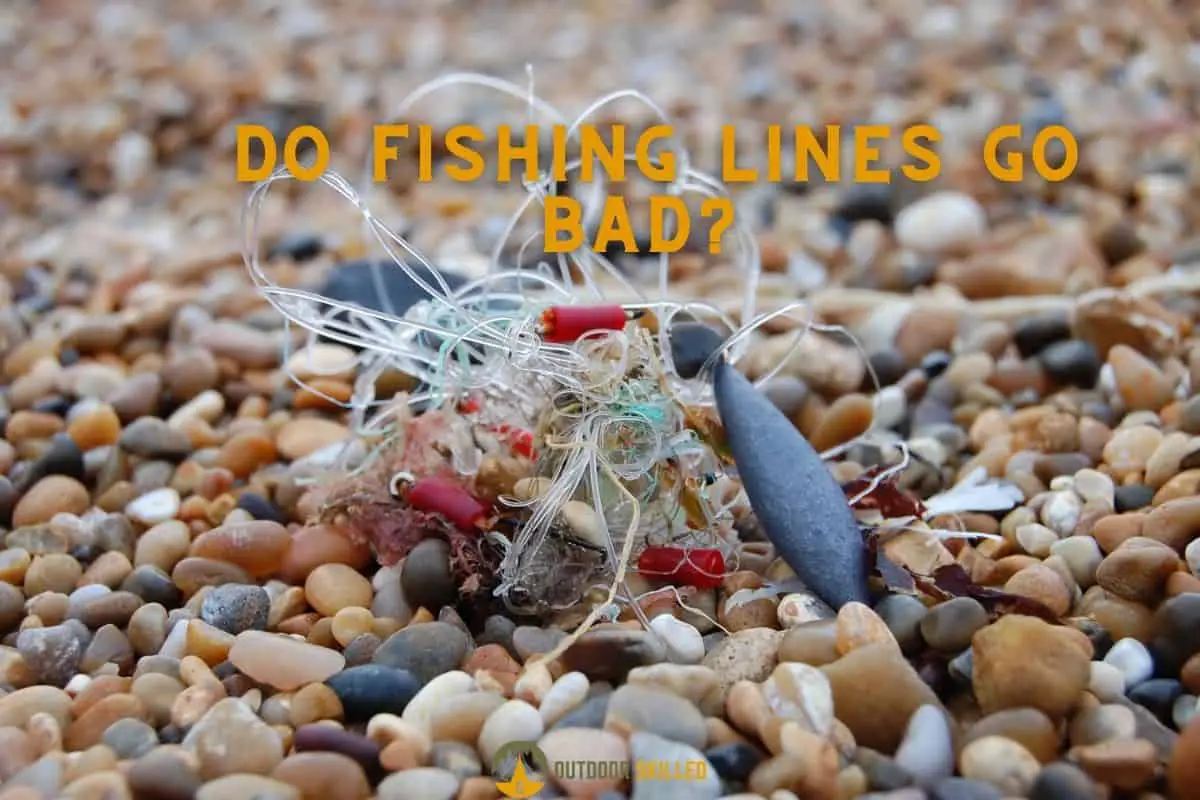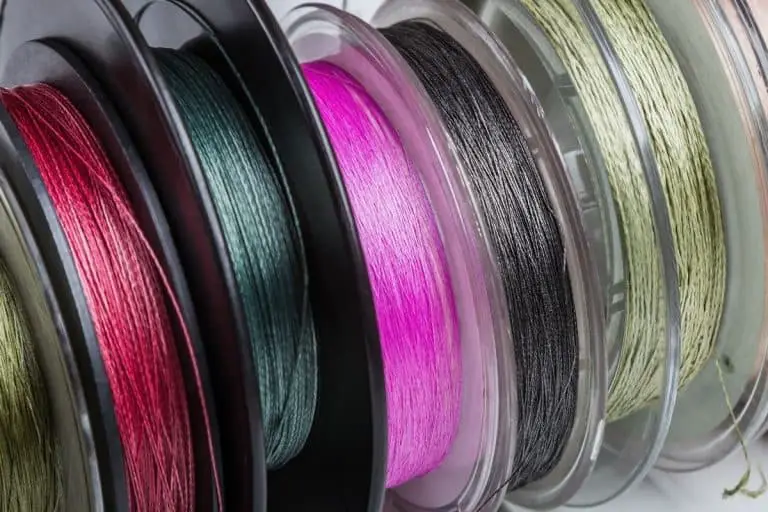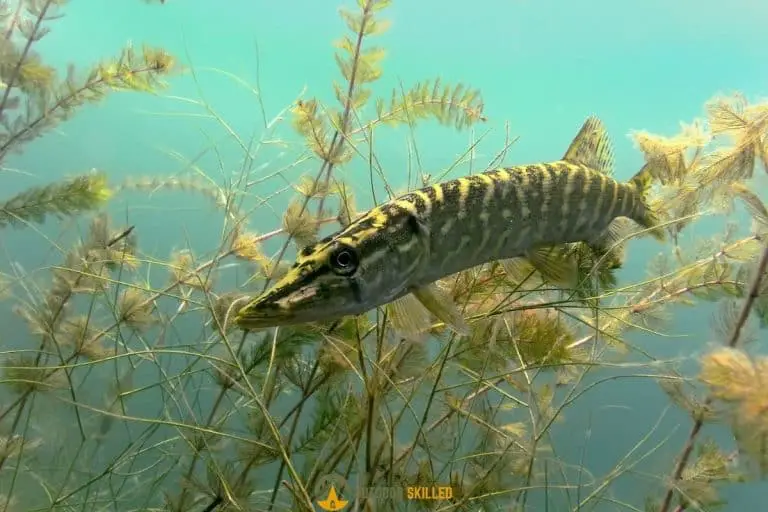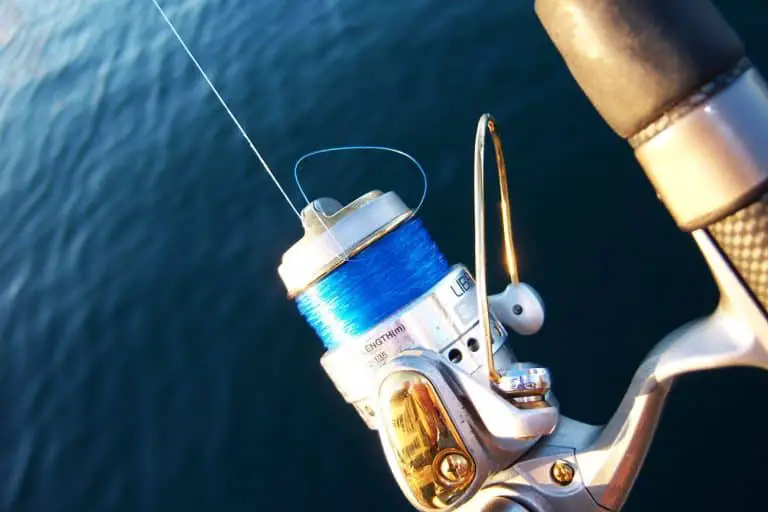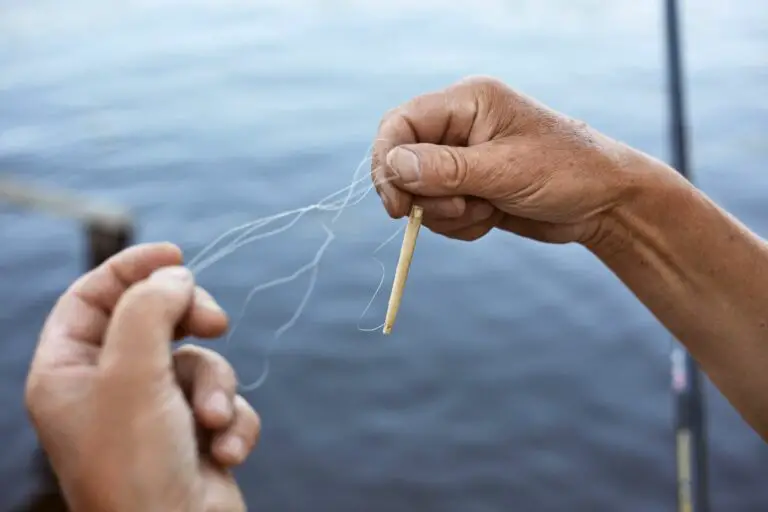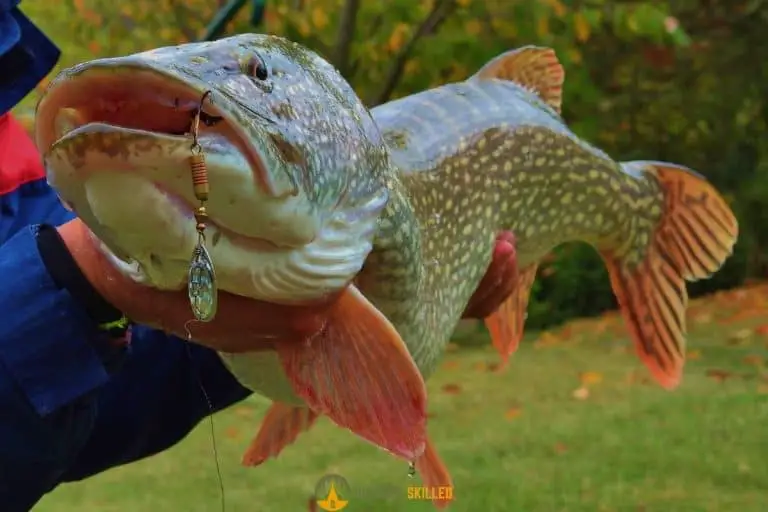Is My Fishing Line Still Good? How to Test for Yourself & Pro Tips
Fishing lines are considered an essential part of your equipment. It’s always important to make sure your fishing line is ready to perform at the highest level otherwise you will risk losing your catch.
So, to answer your question of is my fishing line still good? Your fishing line is still good if it’s relatively new (less than a year old), has not been used extensively, and has been used in mostly freshwater. It’s recommended to change fishing lines at least once a year or whenever signs of wear and tear show on them.
But this is very generally speaking, and there are a lot of factors to consider. We have not even taken the type of line you’re using into consideration. So, keep reading to get to know if your specific fishing line is still good and safe to use.
Table of Contents
Why Do Fishing Lines Go Bad?

There are several factors that can affect the lifespan of your fishing line.
- Frequency of use: Regular use will damage the structure of the line making it weaker and more susceptible to tangle.
- Line type: Some lines have a weaker structure and so, over time, they get damaged more quickly, especially with regular use.
- Storage: Storing a line while wet will cause it to be damaged faster than a dry line. Also storing lines in direct sunlight will cause more damage to the structure of the fishing line.
- The type of water: Saltwater will damage a line faster than freshwater.
How To Choose The Best Fishing Line?
Each type of fishing line has different properties and sets of advantages and disadvantages. In order to make that best choice, you’ll need more information about each line.
So, let’s take a closer look at the main 3 types of fishing lines:
Monofilament line
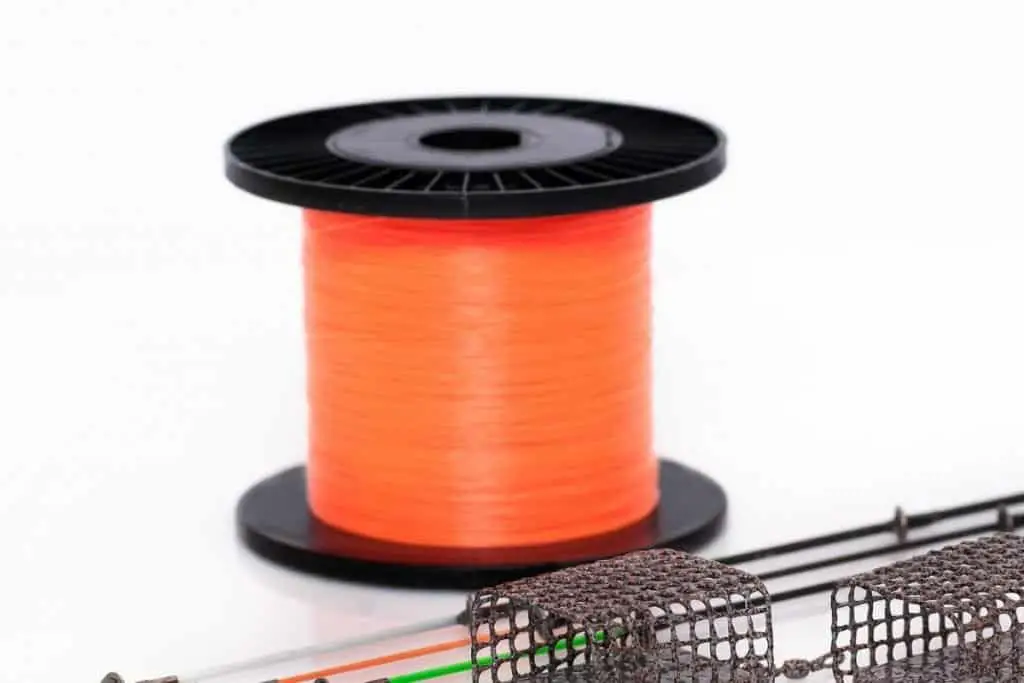
- Monofilament fishing line is possibly the most popular choice among beginners. It’s multi-purpose as well as affordable.
- It’s made using one continuous strand of line. The material used is a synthetic fiber made out of nylon, which makes it cheap to manufacture.
- It’s translucent and very easy to dye, which means that it comes in a variety of colors, so you can choose a color that best suits your fishing environments or that would be ideal for situations when you need to watch your line closely.
- It’s the most resistant to abrasion damage and with proper storage, it can last you a long time.
- It is also very stretchy; this has the benefit of being able to absorb the shock of an aggressive bite or a hooked fish rapidly kicking or changing direction. However, a stretchy line could also have some drawbacks. It can make it difficult to judge the casting distance and cause overcasting.
- Another drawback for monofilament lines is that it’s very susceptible to UV light damage, which degrades its quality faster.
I also have a comparison of monofilament vs braided lines here which you can check to learn more about the advantages and disadvantages of mono lines.
Fluorocarbon line

- Fluorocarbon fishing line is not usually recommended for beginners, which makes it less popular than monofilament. It is definitely a worthy upgrade but it may require some skill.
- It is also one single strand, however, it is made out of a different material than monofilament lines called polyvinylidene fluoride
- Fluorocarbon is known to be much harder to see in the water than monofilament, it becomes almost invisible. Which makes it a great option for stealth fishing.
- It’s not susceptible to UV light damage and is also significantly more resistant to abrasion damage than monofilament.
- It is less stretchy than a monofilament line, which gives it more memory. This could be a benefit as well as a drawback.
To learn everything about Fluorocarbon fishing lines, check out my comparison of braided lines vs Fluorocarbon lines here
Braided line

- Braided fishing line is well known for its strength, which makes it considerably more expensive than monofilament and fluorocarbon.
- It’s made up of several strands of fiber woven together to make a single line. The material used is a synthetic fiber that feels very much like fabric.
- Out of all three types, the braided line is the most visible in the water. It isn’t translucent and the color choices are limited.
- It is more rigid compared to the other types of lines, which means that it can carry a lot more weight.
- It has no stretching capabilities which make it a good choice for casting long distances and casting with accuracy.
- The most prominent drawback in braided lines is that it’s very susceptible to abrasion damage.
If you’re looking for the best braided lines available, check out my favorite braided lines here. These choices didn’t make the list easily as I’ve tested tens of lines before settling on them, but these really have stood the tests of time with me.
In conclusion, choosing the best line is mainly about your preference and your style of fishing.
Here are the key points you might want to keep in mind when choosing your fishing line to make your decision easier:
Line Breaking Strain
This is how much weight is needed to break the line. The bigger the fish you are targeting the higher the breaking strain on the line needs to be.
Line Diameter
This is the thickness of the line. The higher the breaking strain of a line the thicker the line is. A thicker line is more likely to scare fish away from your bait.
Line Stretch
There are benefits and disadvantages to both stretchy and stretch-free lines; it all comes down to the distance you want to fish from the bank, how accurately you need to cast and how sensitive you expect your line to be
Line Memory
This refers to the fishing line’s ability to retain its shape and it can be affected by how stretchy the line is. Generally, when it comes to fishing, less fishing line memory is often better.
Abrasion Resistance
The more resistant a line is to abrasion the longer it will last.
How often do lines need to be changed?
As a general rule, it’s advised to change your fishing line at least once a year. However, this doesn’t necessarily mean that your fishing line goes bad after a year.
Multiple factors can affect how often you should be changing your fishing line. Life span mainly depends on the fishing line itself and the frequency of use, even if the line was not used at all.
Check the following table to learn how many times in a year you would need to change your fishing line, depending on the type of line and how much you use it:
| Usage | Monofilament | Fluorocarbon | Braided |
|---|---|---|---|
| Heavy use | 3 to 4 times a year | 3 times a year | 1 to 2 times a year |
| Moderate use | 2 to 3 times a year | 1 to 2 times a year | once a year |
| Light use (weekenders) | once a year | once a year | once a year |
| No use(shelf life) | 2 to 3 years | 7 to 10 years | over 10 years |
If you’re still not sure if your line needs to be replaced or not, you can always do a line test.
What Does A Line Test Mean for Fishing Lines?
Line test, also known as pound test, simply means the fishing line’s strength in terms of pounds. This refers to as the most weight that a certain type of line can hold before breaking.
To make it simple, if the label on the fishing line says 20 lb test then this means that the fishing can hold up to 20 lbs without breaking.
Here’s how you can do the test to see if your fishing line is still good:
- Securely tie one end of your line to any fixed.
- Make sure the object you pick can handle more force than what you will put on the line.
- Let out about 20-30 feet of line then start pulling.
- If the line breaks well before the weight it should be able to handle, you know it’s bad and can toss it out.
- If the line holds, you’re in the clear to use it.
Make sure you’re wearing goggles and other safety gear when trying this as it can be very dangerous if the line snaps.
How To Properly Maintain Your Fishing Line?
Here some tips you can follow that will help you prolong the lifespan of your fishing line and make the most out of it:
- Make sure to store your lines in a cool dark place. Find a spot in your home where the temperature and humidity are relatively constant throughout the year and avoid windows or direct sunlight. Exposure to heat and light can negatively impact the lifespan of your fishing line.
- Regularly check your fishing lines for any signs of damage.
- Check for abrasion damage. Most of the damage is going to be in the first few yards of line. You can check by pulling some line from the reel and pinching it between your finger and thumb. Also, run your fingers up and down the line, to feel for any rough spots along its length, until you reach a smooth line. This method can be used for all types of lines.
- Check for Mildew. Fishing lines, particularly monofilament ones, may get spots of mildew from the moisture. Although the effects of mildew on fishing line are debatable, it is best to replace the line to prevent any nasty surprises
- Check for UV light damage. UV damage is seen as discolored portions along a clear line. You can easily spot the damage if checked in bright light. Sometimes you may need to just re-spool your reel.
- Check for memory. Memory causes frustrating tangles and twists. You can see memory issues by removing a few feet of the line from your reel and letting it hang loose.
- Be careful when choosing the type of your knots. There are some materials that you should not tie up like nylon because doing so will make it weaker, which will eventually result in breaks on the fishing line. It’s better to use the best knot that the fishing line manufacturer recommends in order to avoid any damage to the line.
- Clean your lines as frequently as possible, especially after fishing on saltwater. That is because the salt can make the fishing line stiff, which may lead to break-off. So, it’s recommended to wash it with soap for 15 minutes to remove all salt.
- A good trick that can be used to make your line last longer is re-spooling it onto another fishing reel. You can do so by cutting off your lure and tying its end to your new fishing reel. Then, start spooling your reel, after you’re done, you will have the older line on the bottom and your fresher line on top of the new reel.
Related Questions
Do fishing lines dissolve?
No, fishing lines do not dissolve. Studies show it can take several hundred years for the environment to break down. If you throw out your fishing line make sure the trash receptacle has a lid and be sure to cut the line into short lengths (6 to 12 inches).
Can a fishing line be recycled?
Only fishing line that is a single filament, such as monofilament and fluorocarbon, can be recycled. The line is broken down into raw plastic pellets that can be made into other plastic products including tackle boxes, spools for line, fish habitats. It is not made into more monofilament lines.
Does color matter when choosing a fishing line?
Yes, color matters when choosing a line. It’s generally based on the color of the water. Clear lines are best to use for ultra-clear water. Yellow lines are suitable for muddy water. Red lines are suitable for deep-sea fishing as it becomes more invisible as it goes deeper.
Why Do You Need To Soak Your Fishing Line Before Spooling?
Soaking your fishing line in a bucket of warm water will help when you come to wind the line on your spool. It will also ensure better casting performance.
Why Do Fishing Lines Become Curly?
The reason why your fishing line might be loose and curly is that it was not fixed correctly in the first place. This occurs when you add the fishing line directly to the chain. Another reason is that some lines tend to absorb more water, which causes it to curl.

